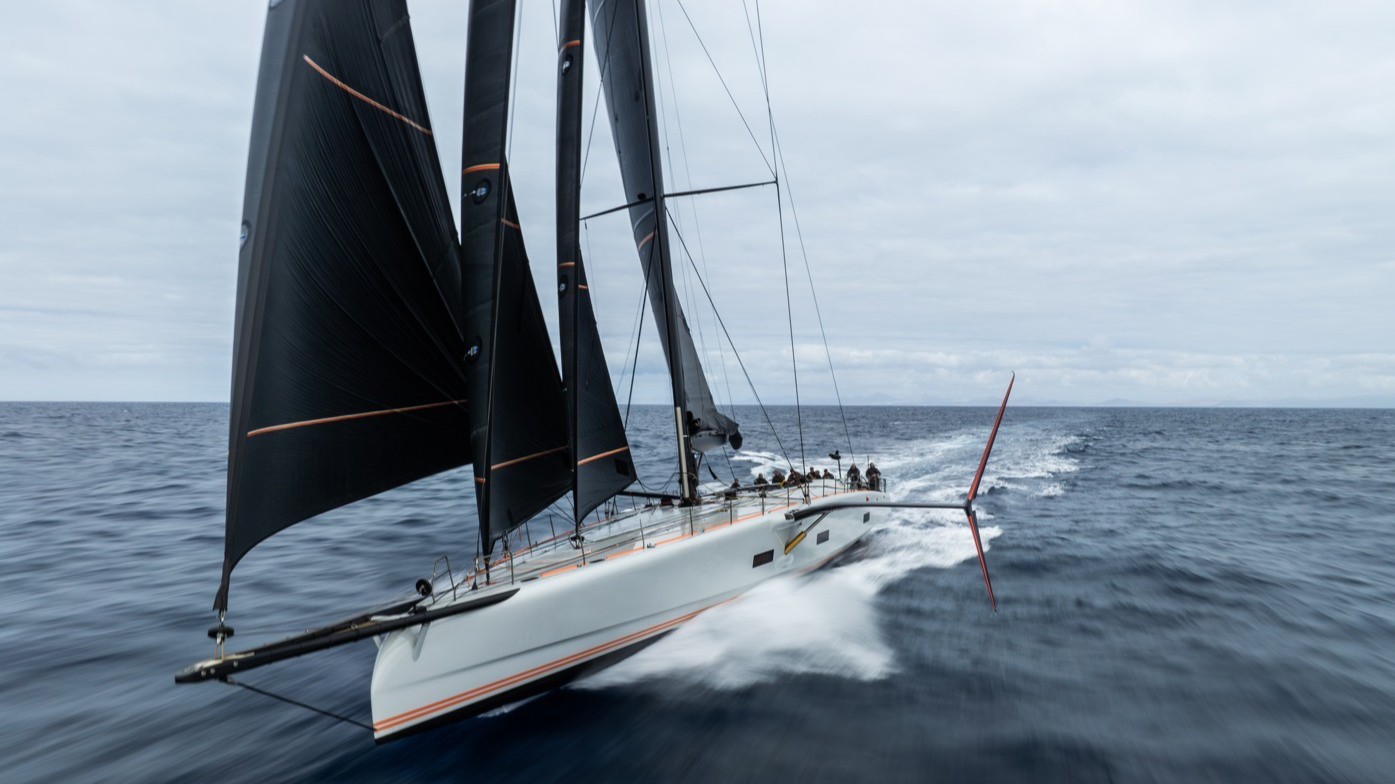Lightweight Yacht Design, Foiling Tech & Smarter Materials: Sailing’s New Wave
As performance yacht design evolves, a new generation of vessels is emerging: lightweight, sustainable, and optimized for speed. We examine how design innovators are creating something new for yachting enthusiasts to get excited about.

Designing cutting-edge yachts – whether for luxury cruising or elite racing – has evolved into a high-stakes (and high-profit) arena of innovation. In 2025, performance is no longer judged solely on speed or aesthetics, but by how well a vessel integrates lightweight construction, advanced hydrodynamics, and adaptable, sustainable materials. The future of yacht design is smarter, faster, and greener.
Hydrofoils at Superyacht Scale
Launched in 2023 by Baltic Yachts, the Baltic 111 Raven is one such example of the naval architectural trend towards hydrofoil-assisted design. Stretching 34 meters, the carbon composite superyacht is equipped with side-mounted, adjustable hydrofoils that deliver both lift and lateral stability. During early sea trials, Raven reportedly reached speeds exceeding 20 knots, which is quite an impressive feat for a yacht of its size.
But it’s not all tech and torque. The interior embraces minimalist design principles, with bamboo and rattan finishes that echo a growing interest in low-impact luxury. This, again, reflects the trend towards simple, durable interiors that don’t add to the weight of the vessel. Above deck, a distinctive “bird’s nest” cockpit offers a panoramic vantage point during high-speed sailing – a design feature that industry watchers have been quick to praise.
The Raven really is redesigning luxury sailing from the keel up. The yacht’s pioneering features earned it the Judge’s Special Award at the Boat International Design & Innovation Awards, recognizing its bold contribution to next-generation yacht design.
Racing Smarter, Not Just Faster
Limits are also being challenged on the competitive sailing side, taking things towards the faster, leaner, greener trends.
The racing vessel which best exemplifies this is the Wallyrocket 51. Debuting at the 2025 ORC Central and Southern Tyrrhenian Championship, the 15.5-meter racer combines aggressive weight-saving strategies with rule-optimized engineering. Weighing just 6.3 tonnes and built using pre-preg carbon, Nomex, and Corecell, it delivers the ideal combination of agility and strength.
Its main innovation, however, is a simple yet highly effective feature: a trim tab located on the keel’s trailing edge. Rarely seen in boats of this class, the component significantly reduces drag and improves upwind performance. This allows the vessel to gain measurable advantage without adding unnecessary complexity.
This “dual soul” approach of high performance paired with owner-friendly handling speaks to a growing segment of competitive sailors who want elite speed without needing a full race crew or constant technical oversight.
Emerging Yacht Design Trends for 2025
Carbon fiber and composite materials are now standard in high-performance builds. Hydrofoils, once limited to small racing craft, are scaling up. And, across both the luxury and racing sectors, designs are increasingly guided by a triad of priorities: efficiency, adaptability, and environmental impact.
One design firm that has helped advance these concepts is Botin Partners, the Spanish naval architecture studio involved in the creation of both Raven and the Wallyrocket 51. Their work illustrates how performance yacht design is becoming more data-driven, owner-focused, and environmentally conscious – without compromising on speed.
As owners and builders continue to push for innovation that reflects changing values, the trends seen in these vessels may soon redefine what we accept as the standard for luxury and competitive sailing.
Images courtesy of Baltic Yachts and Wally.

